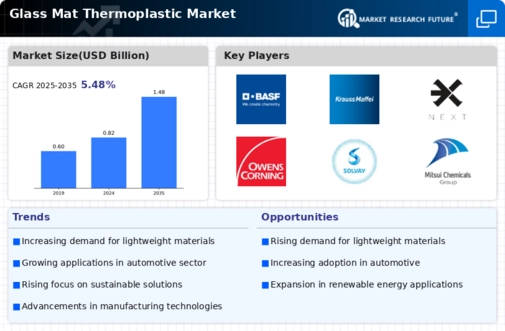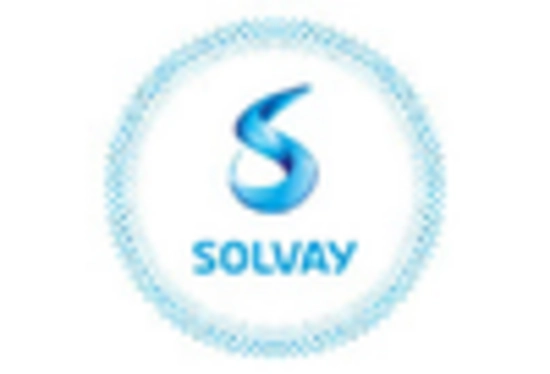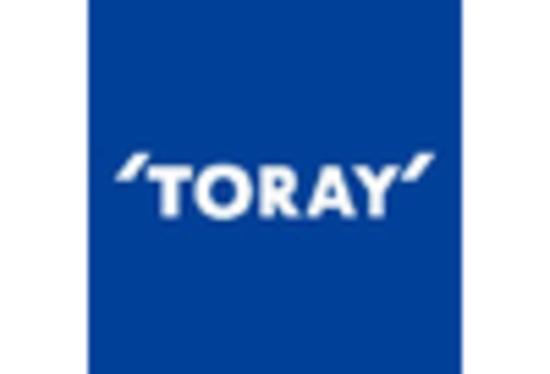Cost Efficiency
Cost efficiency is a critical driver influencing the Glass Mat Thermoplastic Market. As manufacturers seek to optimize production processes and reduce material costs, glass mat thermoplastics present an attractive option. These materials offer a favorable balance between performance and cost, making them appealing for various applications. The ability to produce lightweight components without compromising strength or durability contributes to overall cost savings in industries such as automotive and construction. Market analysis suggests that the adoption of glass mat thermoplastics can lead to a reduction in production costs by up to 15%, which is particularly advantageous in competitive markets. Furthermore, the longevity and reduced maintenance requirements of products made from these materials enhance their cost-effectiveness over time. Consequently, the emphasis on cost efficiency is likely to drive further adoption of glass mat thermoplastics across multiple sectors.
Regulatory Support
Regulatory support is emerging as a vital driver for the Glass Mat Thermoplastic Market. Governments worldwide are implementing stringent regulations aimed at promoting the use of sustainable materials and reducing environmental impact. These regulations often incentivize the adoption of glass mat thermoplastics, which are recognized for their lower emissions and recyclability. For instance, policies encouraging the use of lightweight materials in automotive manufacturing are likely to boost demand for glass mat thermoplastics. Additionally, compliance with environmental standards can enhance a company's market position, making it more competitive. As regulatory frameworks continue to evolve, they are expected to create a favorable environment for the growth of the Glass Mat Thermoplastic Market. This support may lead to increased investments in research and development, further driving innovation and market expansion.
Diverse Applications
The diverse applications of glass mat thermoplastics serve as a significant driver for the Glass Mat Thermoplastic Market. These materials are utilized in various sectors, including automotive, aerospace, construction, and consumer goods, owing to their versatility and superior performance characteristics. In the automotive sector, for example, glass mat thermoplastics are increasingly employed in the production of lightweight components, which enhance fuel efficiency and reduce emissions. The construction industry also benefits from these materials, utilizing them in applications such as roofing and insulation, where durability and thermal resistance are paramount. Market data indicates that the automotive segment alone accounts for over 40% of the total demand for glass mat thermoplastics. This broad spectrum of applications not only fuels market growth but also encourages continuous innovation within the industry, as manufacturers seek to develop specialized products tailored to specific needs.
Sustainability Initiatives
The increasing emphasis on sustainability initiatives is a pivotal driver for the Glass Mat Thermoplastic Market. As industries strive to reduce their carbon footprint, the demand for eco-friendly materials has surged. Glass mat thermoplastics, known for their recyclability and lower environmental impact compared to traditional materials, are gaining traction. This shift is evident in sectors such as automotive and construction, where manufacturers are actively seeking sustainable alternatives. The market is projected to witness a compound annual growth rate (CAGR) of approximately 5% over the next few years, driven by these sustainability efforts. Companies are investing in research and development to enhance the properties of glass mat thermoplastics, making them more appealing for various applications. Thus, sustainability initiatives are likely to continue shaping the landscape of the Glass Mat Thermoplastic Market.
Technological Advancements
Technological advancements play a crucial role in propelling the Glass Mat Thermoplastic Market forward. Innovations in manufacturing processes, such as improved molding techniques and enhanced material formulations, are enabling the production of high-performance glass mat thermoplastics. These advancements not only enhance the mechanical properties of the materials but also expand their applicability across diverse sectors. For instance, the automotive industry is increasingly adopting these materials for lightweight components, which contribute to fuel efficiency. Furthermore, the integration of automation and smart technologies in production lines is streamlining operations, reducing costs, and improving product quality. As a result, the market is expected to experience robust growth, with estimates suggesting a potential increase in market size by 20% over the next five years. This trend underscores the importance of technological advancements in shaping the future of the Glass Mat Thermoplastic Market.

















Leave a Comment